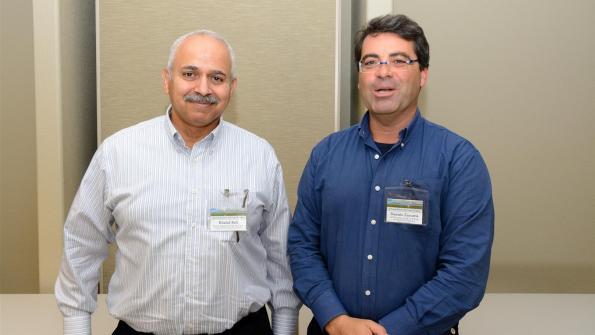
Though by most estimates California appears to be ebbing away from drought conditions, some say it will take more time to recover.
According to the California Department of Water Resources, 420 percent of normal rainfall fell in October across the Northern Sierra Nevada between Blue Canyon and Mt. Shasta City
That was followed by half the normal rainfall across the region the following month.
The driest water year across the region was 1924 with just over 17 inches of precipitation. As of Nov. 21 the region saw 15.7 inches of precipitation since the water year started on Oct. 1.
The wettest year for the Northern Sierra region was 1983 when 88.5 inches of precipitation was reported.
Moving south, the San Joaquin watershed region that includes Yosemite National Park and points south saw just over 300 percent of their normal October precipitation before the rains stopped and the same area saw just 10 percent of its normal November precipitation.
The Tulare Basin was even worse with 133 percent of normal precipitation in October, followed by 3 percent of normal in November.
Is drought normal?
Daniele Zaccaria, an agricultural water management specialist with the University of California Department of Land, Air and Water Resources, said that while the state is seeing the area of exceptional drought dwindle, the fact remains that drought is a normal part of the state’s climate.
“Drought is part of our climate; it’s a recurring phenomenon,” he said.
Zaccaria spoke recently at the Fall Desert Crops Workshop in Imperial, an event sponsored by Western Farm Press.
Corporate sponsors for the workshops included:
Platinum sponsors BASF and Bayer Crop Science; and,
Gold sponsors ADAMA, Dow AgroSciences, Gowan USA, and Westbridge Agricultural Products.
According to Zaccaria, California is suffering from two kinds of drought: meteorological (a simple lack of rain and snow) and hydrological (reduced water supplies).
In spite of better rain and snow condition in 2016 than the previous several years, Zaccaria says drought remains the over-arching condition across the state. Only the far northern counties of Shasta, Siskiyou, Trinity, Humboldt and Del Norte are completely out of drought conditions, according to the National Oceanic and Atmospheric Administration.
Since then however, the U.S. Drought Monitor, a color-coated map depicting California’s severity of drought, shows that only the southern Sierra Nevada, southern San Joaquin Valley and Central Coast continue to experience exceptional drought conditions (the most severe). This accounts for just 21 percent of the state, half of what it was last year at this time.
Much of the southern half of the state continues in extreme drought though much of the low desert growing region along the U.S. border with Mexico is doing slightly better with “severe drought” conditions.
Even with the improved conditions Zaccaria expects the probability of drought to increase, along with its severity, as the effects of climate change continue.
Irrigation management
Khaled Bali, statewide irrigation management specialist for UCANR, told growers and their pest control advisers that among the approaches used in watering crops, irrigation management tends to be the last thing growers look at when it comes to the various means of conserving water.
Bali says things like improving irrigation systems, reducing water applied, finding crops that use less water and fallowing farmland are all good considerations, but may not be best to employ ahead of proper irrigation scheduling techniques.
There are three basic approaches to irrigation scheduling, Bali says. The easiest is to use evapotranspiration (ET) methods along with crop coefficients. There are also soil moisture and plant-based approaches, which he recommends using in concert with each other as the best approach to proper irrigation scheduling.
California Irrigation Management Information System (CIMIS) stations are a common way for growers to gather ET information that can then be used to determine crop water needs.
Still, Bali says these stations provide limited information in that they only report what’s going on above the soil. That’s why he says soil sampling can help provide a more accurate picture of true irrigation needs.
About the Author(s)
You May Also Like






